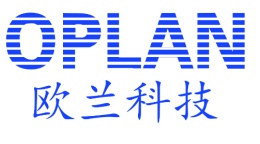方案详情文
智能文字提取功能测试中
ResearchGateSee discussions, stats, and author profiles for this publication at: https://www.researchgate.net/publication/281810035 11TH INTERNATIONAL SYMPOSIUM ON PARTICLE IMAGE VELOCIMETRY-PIV15Santa Barbara, California, September 14-16, 2015 Determination of instantaneous pressure in a transonic base flow using four-pulse tomographic PIV Conference Paper· September 2015 CITATIONS8 READS144 4 authors: Paul Van Gent Kyle Patrick Lynch Delft University of Technology Delft University of Technology 17 PUBLICATIONS 202 CITATIONS 23 PUBLICATIONS 267 CITATIONS SEE PROFILE SEE PROFILE Ferry Schrijer Bas W. van Oudheusden Delft University of Technology Delft University of Technology 104 PUBLICATIONS 832 CITATIONS 245 PUBLICATIONS 4,590 CITATIONS SEE PROFILE SEE PROFILE Determination of instantaneous pressure in a transonic base flow usingfour-pulse tomographic PlV Paul Blinde, Kyle Lynch, Ferry Schrijer and Bas van Oudheusden Delft University of Technology, Faculty of Aerospace Engineering, The Netherlands A tomographic four-pulse PIV system is used in a transonic axisymmetric base flow experiment at a nominal free streamMach number of 0.7, with the objective to obtain flow acceleration and pressure data. The PIV system, consisting of twodouble-pulse lasers and twelve cameras, allows acquiring two velocity fields with time separations as small as 2.5 us. Aperformance assessment is carried out and provides a typical average error estimate below 0.025 U.. (0.3 voxel). The abilityto use these velocity measurements to determine instantaneous, volumetric pressure distributions is assessed. To provide in-situ validation, fast-response pressure transducers are used concurrent with the PIV measurements. PIV was found to yielda mean pressure profile with a similar shape as the mean pressure profile obtained with transducers and as reported inliterature. The levels of pressure fluctuation were however found to be substantially higher. From this comparison it isconcluded that the present PIV-based pressure determination procedure requires improvements to obtain more reliablepressure data. Such improvements may be obtained by optimizing the time separation between consecutive velocity fieldsand by making use of the temporal coherence between consecutive particle images through more advanced processingalgorithms. 1.INTRODUCTION Quantification of mean and fluctuating surface loads is critical for the efficient design of aerospace structures. To measuresurface pressure in experiments, wind tunnel models are typically equipped with pressure transducers, which offer highsampling rates and high sensitivity. A drawback of these devices is that they only measure the pressure at an isolatedlocation. In order to have a sufficient spatial sampling of the surface pressure such that the instantaneous surface loads canbe determined, a large number of transducers is required. Furthermore, from a practical point of view, the installation oftransducers can be costly and can pose significant challenges due to spatial limitations inside the wind tunnel model. Amore recently developed alternative for measuring surface pressure is by the use of pressure-sensitive paint (PSP).Compared to pressure transducers, this technique offers much higher spatial resolution on the model surface, however at areduced sensitivity (and temporal response) [1]. Another alternative is PIV-based pressure determination [2]. In this approach, PIV data is used to determine the materialacceleration, which is related to the local pressure gradient via the momentum equation. Taking a Reynolds-averageapproach, the mean pressure field can be obtained from a series of uncorrelated velocity fields (e.g.[3]). The availability oftime-resolved PIV data allows for the determination of instantaneous pressure fields. Recent developments in PIVmeasurement capabilities, in particular tomographic PIV [4], have made this technique increasingly feasible and appealing.A particular advantage ofthe technique is that it provides simultaneous velocity and pressure data in the full flow field, thusenabling a better understanding of the relation between fluid dynamics and the corresponding pressure field. Furthermore,in contrast to pressure transducers and PSP, PIV-based pressure determination does not require any modifications to models(either the transducer installation, or the surface preparation for PSP). So far, almost all efforts to determine instantaneouspressure distributions from PIV data have been directed at low-speed flows [2]. Yet, there are high-speed applications thatcould profit from the benefits offered by PIV-based instantaneous pressure determination, if its use were to be extended tothe high-speed flow regime. One example can be found in launcher aerodynamics. During the ascent ofa launcher, itsnozzle experiences fluctuating side loads that are related to large-scale unsteadiness in transonic base flows [5-9].Quantifying these loads is critical for efficient designs of nozzles and surrounding structures. The ability of PIV to determine the material acceleration from which the pressure can subsequently be obtained, has beenthe subject of extensive study. Using two or more velocity fields closely separated in time, the material acceleration can bedetermined using traditional Eulerian (fixed reference point) and Lagrangian (reference moving with fluid element)formulations (see e.g. [2] for detailed descriptions). Alternatively, the material acceleration can be estimated from recorded particle images using particle tracking approaches (e.g. [10, 11])or fluid trajectory tracking ([12]). To alleviate the need fortime-resolved velocity data, recently proposed methods calculate the material acceleration from velocity data at a singletime instances by employing physical models (e.g.[13]). Notwithstanding advances in this direction, time-resolved dataallows for a more accurate determination of the material derivative without relying on physical models with theirunderlying assumptions. For flows at low speeds, it is feasible to acquire such time-resolved data using modern high-speed PIV systems. High-speedflows, on the other hand, are characterized by time-scales that are much smaller than the repetition rates of current high-speed laser and camera systems can accommodate. This explains why PIV systems with multiple independent laser andcamera systems (dual/multi-pulse PIV) have been proposed that aim at measuring typically two snapshots closely separatedin time. Examples include a polarization-separated dual-PIV system [14], and a triple-PIV approach that eliminates theneed for optical separation [15]. Apart from the possibility to determine the material derivative, the use of a multi-pulsesystem in high-speed flows and the resulting availability of time-resolved data has other benefits: it enables investigation ofthe temporal flow organization (e.g. by correlating subsequent snapshots) and the use of advanced processing algorithmsfor more accurate determination of velocity (e.g. pyramid correlation [16], FTC [12, 17] and (S)MTE-MART [18,19]). Asfor PIV-based pressure based determination, the use of these techniques has so far mainly been restricted to low-speedflows. Another distinct feature of high-speed flows is that unlike in low-speed flows, compressibility effects resulting inv aariation of the fluid density, cannot be neglected. A solution is offered by van Oudheusden et al. [3] who showed that byassuming adiabatic flow in combination with the gas law, the density can be eliminated as independent variable. Thus anexpression is obtained in which the pressure gradient depends only on the properties of the flow kinematics and thefreestream Mach number. The present work aims at assessing the use of a four-pulse tomographic PIV system in transonic conditions with thepurpose of determining the instantaneous pressure distribution. The experiment considers an axisymmetric afterbodyconfiguration at a nominal Mach number of 0.7. The resulting velocity measurements are assessed for quality andsubsequently used to calculate instantaneous, volumetric pressure distributions. 3.EXPERIMENTAL ARRANGEMENTS Experiments are performed in the transonic-supersonic wind tunnel (TST-27) at the Aerodynamics Laboratory at DelftUniversity of Technology. The facility can generate flows with Mach numbers in the range 0.5-4.2 in a test section of 280mm (width) x 270 mm (height). In the present experiments, the wind tunnel is operated at a total pressure (Po) of 1.9 ×10Pa. Total temperature (To) is approximately 298 K. The nominal Mach number is set at 0.7. Based on pressure staticpressure measurements in the test section and assuming isentropic expansion, the effective free stream Mach number (M)is 0.75 and free stream velocity (U..) is 246 ms . The Reynolds number based on the model diameter (Rep) is 1.0×10°. The wind tunnel model has an elliptical nose and cylindrical main body with a diameter (D) of 50 mm (see Figure 1). It isheld from the rear by a sting that at also acts as cylindrical after-body. The sting diameter is 20 mm resulting in anaxisymmetric backward facing step configuration of 15 mm height. Figure 1 Model dimensions in [mm] Unsteady pressure transducers are used concurrent with the PIV measurements, to provide a means of in-situ validation.The sting contains four pressure ports with four fast-response Endevco 8507C transducers with a range of 15 psi (about 10kPa) and a diameter of 2.34 mm. The first pressure transducer is located 10 mm (0.2D) from the base and the spacingbetween the transducers is 15 mm (0.3D). To measure statistics of mean pressure and rms of the pressure fluctuations at more closely spaced locations, the main body was translated with respect to the sting such that the relative location of thepressure transducers shifts. The transducers are connected such that the atmospheric pressure serves as a reference for thefluctuations. In addition to the unsteady pressure transducers in the sting, a steady pressure port is located in the mean bodyin the same plane as the unsteady transducers, about 20 mm (0.4D) upstream of the base. All transducer signals are sampledat 50 kHz by a National Instruments 9237 acquisition unit. An analog low-pass filtering to 110 dB for frequenciesexceeding 50 kHz is performed prior to sampling to minimize effects of aliasing on the signals. To enable synchronizationwith the PIV measurements, the laser trigger (Q-switch) is recorded simultaneously with the transducer signals. The PIV system consists of twelve cameras and two double-pulse lasers to enable tomographic recording of up to fourclosely separated laser pulses. The system has been proposed and extensively tested in low-speed flow conditions [17].Figure 2 shows a simplified overview of the PIV setup. Note that the figure is meant as a schematic and is not scaled toproper relative dimensions. The PIV measurements are performed in a thin volume located downstream of the step over theafterbody surface where the pressure transducers are located. The size of the measurement volume is 1.3D×0.9D×0.07D(67 mm x 44.5 mm x3.6 mm,LxHxW). The volume starts about 0.14D (7.0 mm) downstream of the step and about0.03D (1.5 mm) above the afterbody, as was inferred from camera angles and model geometry. Figure 2 Simple schematic of the experimental arrangement. The figure is not scaled to show proper relativedimensions. The flow is seeded with dehydrated titanium dioxide (TiO2) particles of the type Kemira P580. The particles have a primarycrystal size of 30 nm (the actual particles are agglomerates of approximately 500 nm), a nominal bulk density of 150 kg mand a particle response time of 2.2 us [20]. The particles are introduced by a seeding rake located in the settling chamber,which is connected to a cyclone seeding generator. The seeding density is manually controlled by means of two regulatingvalves that determine the flow of pressurized air to the seeding generator. Based on visual inspection of various regions invarious images, the particle density is estimated to vary between 0.03 and 0.07 particles per pixel (ppp). Illumination is provided by two double-cavity Nd-Yag lasers: a Quantel Twins PIV-200 laser and a Spectra-Physics QuantaRay PIV-400 laser. Both lasers are operated at 200 mJ/pulse. The light beams from the two lasers are combined using aprism and two 入/2-plates. After combining, the laser light is introduced into the wind tunnel by an optical probe that islocated downstream of the test section [21] (see Figure 2). The laser light is shaped into a sheet using optics inside theprobe. Upon exiting the probe, the edges of the laser light sheets are cut to obtain a more clearly defined boundary and toensure a comparable light sheet thickness of approximately 3.5 mm. The camera array consists of 12 Lavision Imager LX 2MP cameras (pixel resolution 1628 ×1236 pixel, pixel size 4.4×4.4micron) [15]. As shown in Figure 2, the 12 cameras are arranged to form three independent 4-camera tomo-PIV systems:system Si (cameras 1 to 4), system S2(cameras 5 to 8) and system S(cameras 9 to 12). All cameras are placed at an angleof about 16° with respect to the laser sheet to receive forward scattered light. For each system, two cameras are positionedon either side of the measurement volume, one looking up at an angle of approximately 15° and one looking down up at anangle of about 20°. These angles are valid for the center camera system (S2) and vary 3° to 4°for systems Si and S.However, since the three camera systems are placed on top of each, each system has a similar total aperture. Each camera isequipped with a 75 mm Tamron C-mount lens attached to a custom-manufactured Scheimpflug mount. The digitalresolution is 22.2 vox.mm (optical magnification M = 0.1). The lens f-number is set to 5.6, corresponding to a focal depthof about 7 mm (0.14 D) and resulting in a particle image diameter (d) of 1.8 pixels. The synchronization of all components and the acquisition of image data is performed using an external timing unit.Recording and processing of particle image recordings was done using a version of LaVision Davis 8.1.2 software that wasadapted to support the current PIV system. The lasers and cameras are operated according to the timing diagram shown inFigure 3. The timing diagram defines two different time separations: At for the velocity measurement and At for theacceleration measurement. The first time separation (At)is fixed at 2.5 us, which results in a particle displacementcorresponding to the free stream velocity of about 13 pixels (0.6 mm). Three cases are considered for the second timeseparation (At2):0, 5 and 10 us. The case of Atz=0 is used as zero test to assess the accuracy of the PIV systems. The othertwo cases are used for the acceleration measurement and subsequent pressure determination, and were chosen based on anumerical assessment of a similar flow [22]. Note that a At2 of 5 ps results in four pulses with a time separation of 2.5 us,and therefore inherently also results in a At2 of 2.5 us. Series of particle images are acquired at a frequency of 5 Hz. Twoseparate recordings of 100 series of particle images are obtained for each timing-configuration considered. Figure 3 Timing diagram for four laser pulses Lto L4 and exposures I to Is of camera systems S to Ss (adapted from[17]). To maintain proper calibration of the cameras with respect of the measurement volume, a calibration run is performed aftereach measurement recording. The calibration runs are performed with reduced seeding concentration and with all camerasrecording simultaneously, thus allowing the use of volume self-calibration algorithm [23] The algorithm was found toconverge to corrections less than 0.15 pixel. The validity of using the volume self-calibration in combination with thepresent 12-camera system has been assessed in [17]. 3.DATA PROCESSING Images are pre-processed by subtracting the minimum intensity over the time-series and subtracting the minimum intensitywithin 31 pixel-sized kernels. Any residual background noise fluctuations are removed by subtracting a constant intensityof 10 counts. The intensity was not normalized within or between the images and no smoothing or sharpening was applied. Reconstructed volumes are obtained using the fast-MART algorithm in the LaVision 8.1 software. Reconstructions areinitialized with a uniform value of 1.0. Eight iterations are performed using 3 x 3 × 3 Gaussian smoothing of the volumeafter each iteration, excluding the final iteration. The computations are optimized by not updating voxels with an intensitybelow 0.001 counts [24]. Figure 4 shows intensity profiles along the depth direction of the resulting volume reconstructions for laser pulses Li to L4 obtained with camera systems S to S3. The profiles have been normalized with respect to theirmaximum intensity. Dashed lines indicate the boundaries for the measurement volume. The lasers sheet can clearly beidentified within the volume, and a signal-to-noise ratio between 3 and 5 is achieved (see e.g.[4]). The laser sheets from thefour pulses can be seen to properly overlap. The figure shows that L and L2 from the Quantel laser have a slightly differentprofile than L and L4 from the Spectra Physics laser. Whereas Figure 4 depicts profiles that are representative for allrecordings, minor variations in the shape and location of the lasersheet were observed between different snapshots. Figure 4 Representative reconstructed intensity profiles for laser pulses L to L4 from camera systems S to S3. Theprofiles have been normalized with respect to their maximum intensity. Dashed vertical lines indicate the boundaries forthe measurement volume Velocity data are obtained by direct cross-correlation of the images using a multi-grid approach with window deformation.The cross-correlation is performed symmetrically and the algorithm evaluates the correlation over sub-blocks for a fastanalysis with high overlap factor. Vector fields from intermediate correlation steps are enhanced for the next iteration byremoving spurious vectors, identified by universal outlier detection [25], replacing them using linear interpolation and byGaussian smoothing of the velocity field. The final three iterations are performed with an interrogation volume size of 48 ×48×48 voxels at 75%overlap, resulting in a vector spacing of 0.55 mm (12 voxels) and a measurement grid of 124×82 ×7 (71,176 vectors). As for the intermediate steps, spurious vectors are removed after the final step by universal outlierdetection and replaced using linear interpolation. The amount of removed vectors after the final correlation step is typicallybelow 1%. The instantaneous pressure is evaluated from PIV data by first determining the material acceleration and then solving aadapted version of the momentum equation for pressure [2]: Here Du/Dt is the material acceleration, R the gas constant, y the ratio of specific heats, T the static temperature and p thestatic pressure, the subscript denotes free stream values. Note that equation (1) has been derived under the assumption ofinviscid and adiabatic flow. The high Reynolds number of the current flow motivates the inviscid flow approximation,while the limited heat transfer from the model supports the adiabatic assumption. The material acceleration is obtained from the PIV velocity data, for which various implementations of the Eulerian andLagrangian formulations have been tested, with various (higher) order methods for spatial differencing and particle integration (for the Lagrangian approach). These methods cannot extend all the way to the boundary of the domain andtherefore it is cropped before further processing. The pressure gradient field from equation (1) is spatially integrated to yield the pressure field, by first taking the divergenceand then solving the resulting Poisson equation (see e.g. [26-29]). The solver for the 3-D Poisson problem used in thepresent study discretizes the problem using a second-order finite difference scheme and the inverts the resulting linearsystem of equations. Pressure gradients are prescribed as Neumann boundary conditions used on all sides of the domainexcept for the top, where the pressure as obtained from the isentropic flow relations (eq.2) is prescribed as Dirichletboundary: The validity of the modeling assumptions as well as the errors introduced by data processing have been assessed in [22]. 4. VELOCITY FIELD AND PERFORMANCE ASSESSMENT OF THE PIV SYSTEM Before the pressure determination, the quality of the velocity measurements is assessed, since they form the input for thesubsequent processing. Figure 5 shows the normalized mean flow field. The contour levels represent the horizontal velocitycomponent and the black line separates the region of reversed flow. The flow is characterized by a large-scale separatedregion, with reattachment occurring at approximately x/D=1.0. Within the separated region, backflow is present with amagnitude of up to 30% of the freestream velocity. The separated shear layer emanates from the trailing edge of the modeland grows in downstream direction. Figure 5 Normalised mean flow field. Contours show velocity in steamwise direction; Black solid line separates theregion of reversed flow; Vectors are undersampled for improved visualization. Figure 6 shows the RMS of velocity fluctuations in streamwise (x), radial (y) and out-of-plane (z) direction. The highestfluctuation levels are observed in the shear layer and the reattachment region. When comparing the maximum values about0.2 and positions of the local maxima, a good agreement is found with the results reported by [30].The figure shows spotswith elevated levels of fluctuations near the boundaries of the volume. These are the result from of a small number ofsnapshots with poor seeding quality and therefore inaccurate measurements at those locations. uMs/U.J。 VRMS/U. wRMs/U Figure 6 RMS of fluctuations vector fields obtained with camera S Left: streamwise component. Center: radial component. Right: out-of plane component To characterize the performance of the tomographic systems, a zero test is performed by setting ▲t2 (see Figure 2) to zero.This way both tomographic systems record particle image pairs at the same time. In absence of any measurement errors,both tomographic systems should produce the same vectorfields. Comparison of the vector fields obtained with thedifferent systems therefore provides an error estimate (see e.g. [31]): where en is the relative error and usi and us2,3 are the velocity fields obtained with camera system Si and the compositecamera system S2,3(S2 records the first pulse and S the second laser pulse). Figure 7 shows an example of the error estimate for an instantaneous velocity field. The figure shows that the error estimatefor the freestream region is typically lower than 0.02 U.. for the streamwise and radial velocity components, and in therange of 0.01-0.05 for the out-of plane velocity component. Typical error estimates for the shear layer and the reattachmentregion are two to three times higher compared to typical estimates for the freestream region. Patches are observed in whichthe local error estimate exceeds 0.1U., whereas the corresponding velocity fields did not show clear evidence of outliers atthose locations. The lower accuracy of the out-of-plane velocity component may be attributed to the camera setup. Due tothe viewing angles of the cameras, they observe a smaller pixel displacement in z-direction for the same velocity as theywould observe in x- and y-direction. Furthermore, the viewing directions of the cameras allow for less accuratereconstructions of particle shapes in z-direction (see [4]). Figure 7 Example of instantaneous error estimate. Left: streamwise component. Center: radial component. Right: out-ofplane component. Figure 8 shows the average error estimate, i.e. the average of instantaneous errors estimated using equation 3 (note thedifference in scale with respect to Figure 7). The average error estimate for the freestream region is typically lower than0.005 U.。 for the streamwise and radial velocity components, and lower than 0.015 U.. for the out-of plane velocitycomponent. As before, higher errors can be seen in the shear layer and reattachment region where the average error estimateis typically lower than 0.025 U.. corresponding to particle displacements of about 0.30 voxel. A thin region with elevatederror levels is present at the bottom of the measurement volume. Figure 8 Estimate of average instantaneous error estimate. Left: streamwisecomponent. Center: radial component. Right: out-of plane component. Differences between mean velocity fields obtained with both systems indicate bias errors, e.g. due to a systematicmeasurement error and/or errors due to the limited number of snapshots. Therefore, by evaluating equation (3) using meanvelocities, bias errors could be estimated to be lower than 0.005U。。in streamwise and radial direction and lower than0.01U。, in out-of-plane direction, corresponding to particle displacements of 0.06 and 0.12 voxel, respectively. Discrepancies between measurements of the different systems are detrimental for the determination of the materialderivatives. In general, the discrepancies can be expected to decrease with increasing measurement accuracy. Improvementsmay be achieved by making use of the temporal coherence between consecutive particle images, e.g. by using (an adaptedversion of) MTE-MART, which iteratively improves the reconstruction by using the obtained velocity field [19], and/orFTC which correlates more than two consecutive reconstructions to obtain the material derivative and an improvedmeasurement of velocity [12, 17]. The application of these techniques to the present recordings is subject to further researchand outside the scope of the current paper. Another approach to reduce discrepancies between the different systems is by means of spatial filtering at the expense ofloss of information. A preliminary investigation showed that while (aggressive) filtering indeed reduces the averagedifference in the zero test, it did not lead to clear benefits for the pressure determination. 5. PRESSURE FIELD The velocity fields discussed above have been used as input to the pressure calculation algorithms. All PIV resultsdiscussed in this section have been obtained via the Eulerian formulation of the material derivative and by using centraldifferencing to compute spatial derivatives. The use of the Lagrangian formulation and higher-order spatial derivatives wasnot found to lead to a significantly better comparison with the transducer results and therefore the corresponding results arenot shown here. Figure 9 shows the results for the mean pressure. Figure 9 (left) compares the mean pressure measured by the transducers inthe afterbody and the results obtained by PIV along the centerline across the floor of the domain, which is located 0.05 D(2.5 mm) above the afterbody. Results from comparable studies reported in literature [5, 32-34] have been included in thecomparison. The figure shows that the pressure distribution as measured by the transducers follows a classical backward-facing step pressure profile. The profile starts with relatively low mean pressures in the recirculation region. Here, theresults are consistent with values reported in literature. The mean pressure then increases in downstream direction towardsthe reattachment region, while increasingly deviating from the values reported in literature. The discrepancytweenthemeasured values and those in literature may partially be attributed to a difference in geometry. In the present configurationthe afterbody is rather long as it also serves as model support. As a result, the shear layer always attaches on the afterbody(solid reattachment). In contrast, [5, 33, 34] use a truncated afterbody with a length of 1.2D. In that configuration, theflapping shear layer intermittently reattaches on the afterbody and the downstream flow (intermittent solid and fluidicreattachment). Another source of discrepancies may be the effects of wind tunnel blockage. In the present configuration, thefrontal area of the model is approximately 3% of the test section cross-sectional area, compared to 1% for theconfigurations used by [5, 34] and no impact of blockage in the numerical simulations of [33] The mean pressure profile obtained from the PIV data with Atz =10 us has a similar shape as the profile obtained withtransducers, but lower values are observed in the recirculation region and higher values close to reattachment. Thisdifference may (in part) result from the 0.05 D (2.5 mm) distance between the PIV pressure domain and the afterbody.Figure 9 (right) shows the mean pressure field obtained by PIV with Atz =10 us in the center-plane of the measurementvolume. The figure shows that PIV yields a pressure organization with lower pressure in the upstream part of themeasurement volume and higher pressure in the downstream part of the field of view. A low pressure region can beobserved in the recirculation region (compare Figure 5). Figure 9 Mean pressure results. Left: Mean pressure profile on the afterbody. Left: Mean pressure field in thecenterplate of the PIV measurement volume; Eulerian approach,Atz=10 us Figure 10 shows the results for the RMS of pressure fluctuations. Similar as for the mean pressure, Figure 10 (left) againcompares the pressure fluctuations measured by the transducers, the results obtained by PIV and the reference data fromliterature. To exclude the impact of any high-frequency noise, the measurements have been filtered to only includefrequencies below a Strouhal number of 2.0, following [5]. Although this filtering reduced levels of fluctuations by about10%, the figure shows that they are still well above those reported in literature. The relatively high level of fluctuations isattributed to the acoustic noise present in the wind tunnel. The existence of excessive noise in the test sections of transonicwind tunnels has been topic of a number of investigations (e.g. [35]) and was confirmed for the present configuration bySchlieren images. Visual inspection of these images showed a superposition of downstream moving structures, upstreammoving waves and longitudinal waves that bounced between the tunnel bottom and top wall. To further characterize thestatic pressure fluctuations in the tunnel, the main body of the model was removed from the supporting sting, leaving onlythe afterbody with the four transducers. The levels of fluctuation measured in this configuration are found to be higher thanthe levels reported in literature for the baseflow (see black horizontal line in Figure 10, left). For consistency, themeasurements have again been filtered to only include frequencies below a Strouhal number of 2.0 (based on the diameterof the removed main body). Reduced fluctuations were achieved in a dedicated transonic test section. It is currentlyhowever not feasible to use that test section in combination with the present PIV system due to its limited optical access. The RMS pressure profile obtained by PIV show large deviations from transducer measurements and poorly defineddistribution. Fluctuation statistics in the lower part of the measurement volume likely suffer from the elevated error levelsin that region (compare Figure 8). The profile has therefore been calculated for a cropped volume starting 0.1 D (5 mm)from the wall. The fluctuations shown for the case Atz= 10 us are lower than for the case Atz=5 us (not shown here). Thisobservation is consistent with the explanation that the impact of velocity measurement noise on the accelerationcomputation is larger for the smaller velocity differences associated with a smaller time separation. It is speculated that aneven larger time separation (At) than 10 us may further reduce the level of fluctuations although its beneficial impact inreducing the impact of measurement noise will be counteracted by a larger discretization error for the material derivative.Figure 10 (right) shows the RMS pressure field obtained by PIV with Atz=10 us in the centerplane of the measurement volume. The figure shows that the PIV yields the highest fluctuations in the reattachment region and diminishingfluctuations towards the top of the domain. Figure 10 RMS of pressure fluctuations. Left: RMS pressure profile on the afterbody. Left: RMS pressure field in thecenterplate of the PIV measurement volume; Eulerian approach, tz=10 us Figure 11 shows a representative example of an instantaneous pressure field obtained by PIV. As in the mean results, thefigure shows lower pressure in the upstream part of the measurement volume and higher pressure in the downstream part.In addition, the figure shows smaller structures that are predominantly present in the location of the shear layer andreattachment region. Comparison of PIV pressure data, velocity data and transducers measurements on an instantaneousbasis is subject of future investigation. From the comparison of RMS fluctuations it can however already be concluded thatthe present PIV-based pressure determination procedure requires a step improvement to obtain more reliable instantaneouspressure data for the flow conditions under consideration here. C. x/D Figure 11 Representative instantaneous pressure field in the centerplate of the measurement volume; Eulerian approach,Atz=10 us. 6. CONCLUSIONS The tomographic four-pulse PIV system consisting of two double-pulse lasers and three sets of four cameras was applied ina transonic axisymmetric base flow. The system proved to be successful in obtaining time-resolved series of four particleimages and two volumetric velocity distributions. Based on a zero test, the average velocity error was estimated to betypically lower than 0.025 U.. corresponding to particle displacements of about 0.3 voxel. Individual instantaneous velocitydistributions were however found to contain local patches in which the error estimate is more than three times as great. PIVvelocity distributions with time separations of 5 and 10 ps were used to determine the material acceleration of the flow andsubsequently the pressure. To provide in-situ validation of the PIV pressure fields, unsteady pressure transducers were used concurrent with the PIVmeasurements. Transducer pressure measurements were compared to values reported in literature and a reasonableagreement was found for the mean pressure distribution. The measured levels of fluctuation were however found to besubstantially higher. These elevated fluctuation levels were attributed to the presence of acoustic noise in the wind tunnel,which was confirmed by Schlieren measurements and transducer measurements in absence of the model. The procedure for PIV-based pressure determination resulted in a mean pressure profile with a similar shape as the profileobtained with transducers, but with a lower minimum and higher maximum. Using a smaller time separation between thePIV velocity fields was found to result in larger deviations from the transducer measurements and literature values. Thisobservation is consistent with the explanation that the impact of velocity measurement noise on the accelerationcomputation is larger for the smaller velocity differences associated with a smaller time separation. The RMS pressure profiles obtained by PIV show large deviations from transducer measurements and poorly defineddistributions. From this comparison, it was concluded that the present PIV-based pressure determination procedure requiressubstantial improvements to obtain more reliable pressure data. Such improvements may be obtained by optimizing thetime separation between subsequent velocity fields and by making use of the temporal coherence between consecutiveparticle images through more advanced processing algorithms (e.g. an adapted version of MTE-MART, which iterativelyimproves the reconstruction by using the obtained velocity field [19], and/or FTC which correlates more than twoconsecutive reconstructions to obtain the material derivative and an improved measurement of velocity [12, 17]). Theapplication of such algorithms to the present recordings is subject to further research as well as the comparison of PIVpressure data, velocity data and transducers measurements on an instantaneous basis. ACKNOWLEDGEMENTS This work is supported by the European FP-7 project“NIOPLEX”, grant agreement 605151. REFERENCES 1. Liu T Sullivan JP“Pressure and Temperature Sensitive Paints (Experimental Fluid Mechanics)" Springer (2005) 2. Van Oudheusden BW“PIV-based pressure measurement”Measurement Science and Technology 24 (2013) 3. Van Oudheusden BW Scarano F Roosenboom EWM Casimiri EWF and Souverein LJ“Evaluation of integral forces and pressure fieldsfrom planar velocimetry data for incompressible and compressible flows”Experiments in Fluids 43 (2007) pp. 153-162 4. Scarano F“Tomographic PIV: principles and practice”Measurement Science and Technology 24 (2013) 5. Depres D Reijasse P and Dussauge JP“Analysis of unsteadiness in afterbody transonic flows" AIAA Journal 42(12) (2004) 6. Hannemann K Lideke H and Pallegoix J-F“Launch Vehicle Base Buffeting-Recent Experimental and Numerical Investigations”ESASpecial Publication (2011) 7. Marie S Druault Ph Lambare H Schrijer F“Experimental analysis of the pressure-velocity correlations of external unsteady flow overrocket launchers”Aerospace Science and Technology 30 (2013) pp. 83-93 11TH INTERNATIONAL SYMPOSIUM ON PARTICLE IMAGE VELOCIMETRY-PIV15Santa Barbara, California, September 14-16, 2015 8. Weiss P-E Deck S Robinet J-C and Sagaut P“On the dynamics of axisymmetric turbulent separating/reattaching flows” Physics ofFluids 21(7) (2009) 9. Deck S and Thorigny P“Unsteadiness of an axisymmetric separating-reattaching flow: Numerical investigation”Physics of Fluids19(6)(2007) 10. Novara M and Scarano F“A particle-tracking approach for accurate material derivative measurements with tomographic PIV”Experiments in Fluids 54 (2013) 11. Schroder A Schanz D Michaelis D Cierpka C Scharnowski S and Kahler CJ“Advances of PIV and 4D-PTV"Shake-The-Box”forTurbulent Flow Analysis -the Flow over Periodic Hills”Flow, Turbulence and Combustion (2015) 12. Lynch KP and Scarano F “A high-order time-accurate interrogation method for time-resolved PIV”Measurement Science andTechnology 24 (2013) 13. Schneiders JFG Dwight RP and Scarano F“Time-supersampling of 3D-PIV measurements with vortex-in-cell simulation”Experimentsin Fluids 55 (2014) 14. Souverein LJ and Van Oudheusden BW“Application of a dual-plane particle image velocimetry (dual-PIV) technique for theunsteadiness characterization of a shock wave turbulent boundary layer interaction”Measurement Science and Technology (2009) 15. Lynch KP and Scarano F“Material derivative measurements in high-speed flows by four-pulse tomographic PIV” 10th InternationalSymposium on Particle Image Velocimetry (2013) 16. Sciacchitano A Scarano F and Wieneke B“Multi-frame pyramid correlation for time-resolved PIV”Experiments in Fluids 53 (2012)pp.1087-1105 17. Lynch KP and Scarano F“Material acceleration estimation by four-pulse tomo-PIV"Measurement Science and Technology 25 (2014) 18. Lynch KP and Scarano F“An efficient and accurate approach to MTE-MART for time-resolved tomographic PIV”Experiments inFluids 56,pp. 1-16 19. Novara M Batenburg KJ and Scarano F“Motion tracking-enhanced MART for tomographic PIV”Measurement Science andTechnology 21 (2010) 20. Ragni D Schrijer FFJ Van Oudheusden BW and Scarano F“Particle tracer response across shocks measured by PIV”Experiments inFluids 50 (2010) pp. 53-64 21. Donker Duyvis FJ“Laser sheet probe design for PIV in high speed wind tunnels" PIVNET II International Workshop on theApplication of PIV in Compressible Flows, Delft, the Netherlands (2005). 22. Blinde PL Lynch KP Van Oudheusden BW Schneiders JFG and Schrijer F“Assessment of instantaneous pressure determination in atransonic base flow based on four-pulse tomographic PIV”17th International Symposium on Applications of Laser Techniques to FluidMechanics, Lisbon (2014) 23. Wieneke B“Volume self-calibration for 3D particle image velocimetry”Experiments in Fluids 45 (2008) pp. 549-556 24. Atkinson C and Soria J“An efficient simultaneous reconstruction technique for tomographic particle image velocimetry”Experimentsin Fluids 47 (2009) pp. 553-568 25. Westerweel J and Scarano F“Universal outlier detection for PIV data”Experiments in Fluids 39 (2005) pp. 1096-1100 26. Probsting S Scarano F Bernardini M and Pirozzoli S“On the estimation of wall pressure coherence using time-resolved tomographicPIV”Experiments in Fluids 54 (2013) 27. Ghaemi S Ragni D and Scarano F“PIV-based pressure fluctuations in the turbulent boundary layer”Experiments in Fluids 53, (2012)pp. 1823-1840 11TH INTERNATIONAL SYMPOSIUM ON PARTICLE IMAGE VELOCIMETRY-PIV15Santa Barbara, California, September 14-16, 2015 28. De Kat R and Van Oudheusden BW“Instantaneous planar pressure determination from PIV in turbulent flow”Experiments in Fluids52,(2011)pp. 1089-1106 29. Charonko JJ King CV Smith BL and Vlachos PP“Assessment of pressure field calculations from particle image velocimetrymeasurements” Measurement Science and Technology 21 (2010) 30. Schrijer FFJ Sciacchitano A and Scarano F“Spatio-temporal and modal analysis of unsteady fluctuations in a high-subsonic base flow”Experiments in Fluids 26 (2014) pp. 86-101 31. Christensen K and Adrian R“Measurement of instantaneous Eulerian acceleration fields by particle image accelerometry: method andaccuracy”Experiments in Fluids 33, (2002) pp. 759-769 32. Bitter M Hara T Hain R Yorita D Asai K Kahler CJ“Characterization of pressure dynamics in an axisymmetric separating/reattachingflow using fast-responding pressure-sensitive paint”Experiments in Fluids 53 (2012) pp. 1737-1749 33. Weiss P-E and Deck S “Control of the antisymmetric mode (m=1) for high Reynolds axisymmetric turbulent separatingreattaching111flows”Physics of Fluids 23(9) (2011) 34. Meliga P and Reijasse P“Unsteady Transonic Flow Behind An Axisymmetric Afterbody Equipped With Two Boosters” 25th AIAAApplied Aerodynamics Conference (2007) 35. Mabey DG“Flow Unsteadiness and Model Vibration in Wind Tunnel at Subsonic and Transonic Speeds” Aeronautical ResearchCouncil Current Papers No. 1155 (1971) All content following this page was uploaded by Paul Van Gent on November The user has requested enhancement of the downloaded file. View publication stats A tomographic four-pulse PIV system is used in a transonic axisymmetric base flow experiment at a nominal free stream Mach number of 0.7, with the objective to obtain flow acceleration and pressure data. The PIV system, consisting of two double-pulse lasers and twelve cameras, allows acquiring two velocity fields with time separations as small as 2.5 μs. A performance assessment is carried out and provides a typical average error estimate below 0.025 U∞ (0.3 voxel). The ability to use these velocity measurements to determine instantaneous, volumetric pressure distributions is assessed. To provide insitu validation, fast-response pressure transducers are used concurrent with the PIV measurements. PIV was found to yield a mean pressure profile with a similar shape as the mean pressure profile obtained with transducers and as reported in literature. The levels of pressure fluctuation were however found to be substantially higher. From this comparison it is concluded that the present PIV-based pressure determination procedure requires improvements to obtain more reliable pressure data. Such improvements may be obtained by optimizing the time separation between consecutive velocity fields and by making use of the temporal coherence between consecutive particle images through more advanced processing algorithms.
关闭-
1/14
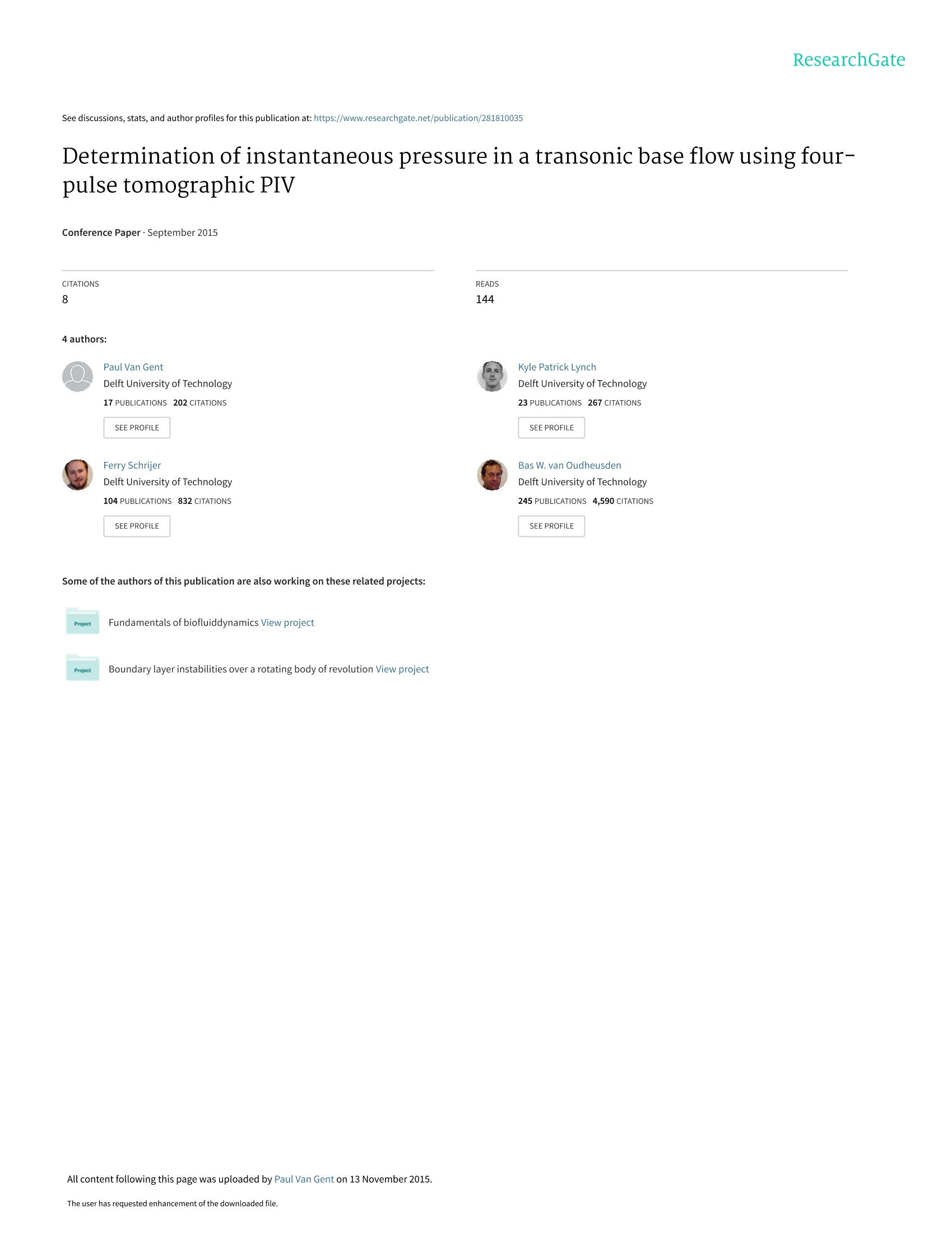
-
2/14

还剩12页未读,是否继续阅读?
继续免费阅读全文产品配置单
北京欧兰科技发展有限公司为您提供《空气流动中3D3C速度矢量场检测方案(CCD相机)》,该方案主要用于航天中3D3C速度矢量场检测,参考标准《暂无》,《空气流动中3D3C速度矢量场检测方案(CCD相机)》用到的仪器有Imager LX PIV相机、体视层析粒子成像测速系统(Tomo-PIV)、LaVision DaVis 智能成像软件平台。
我要纠错
推荐专场
CCD相机/影像CCD
更多相关方案
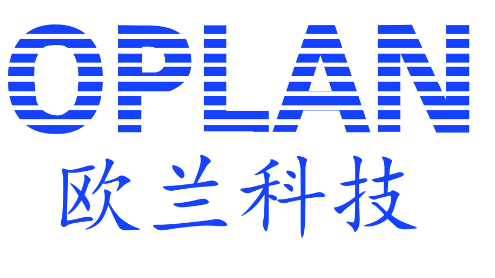


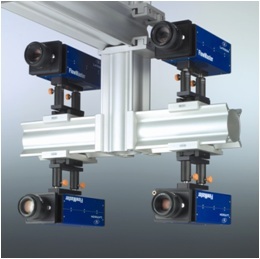
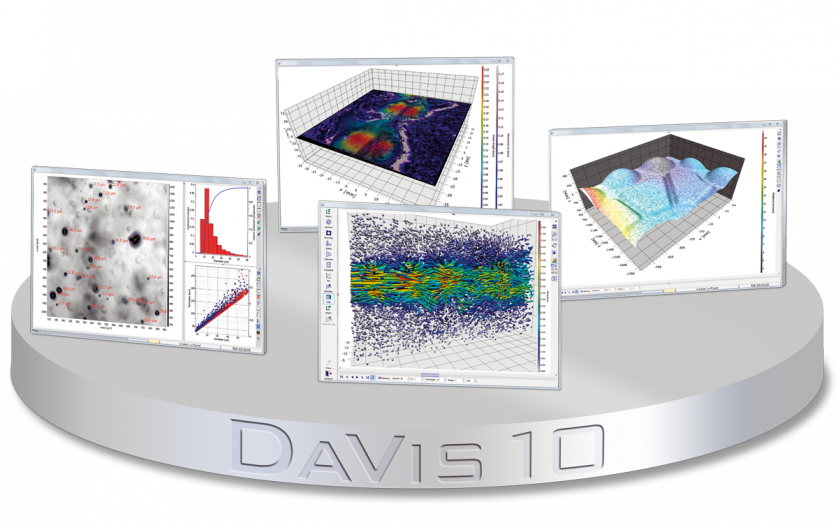

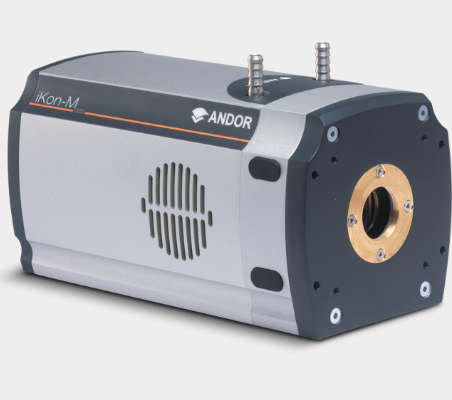
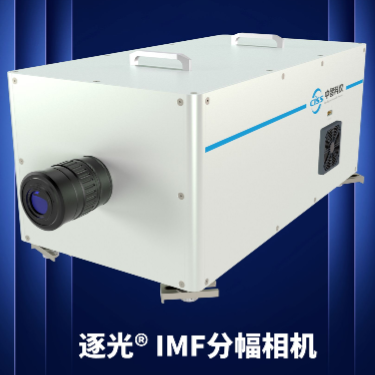
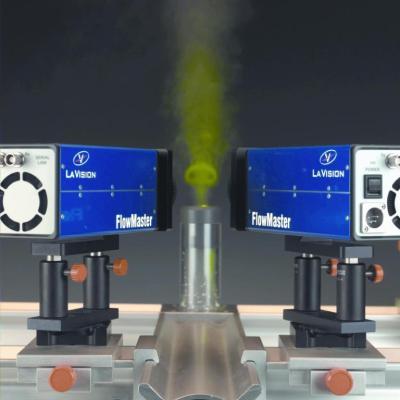
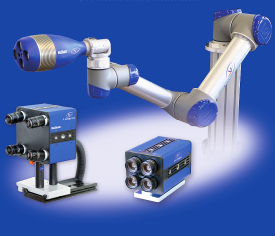
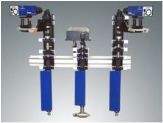

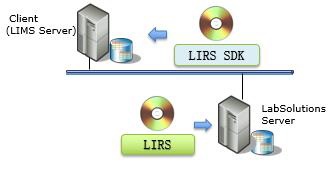

 咨询
咨询